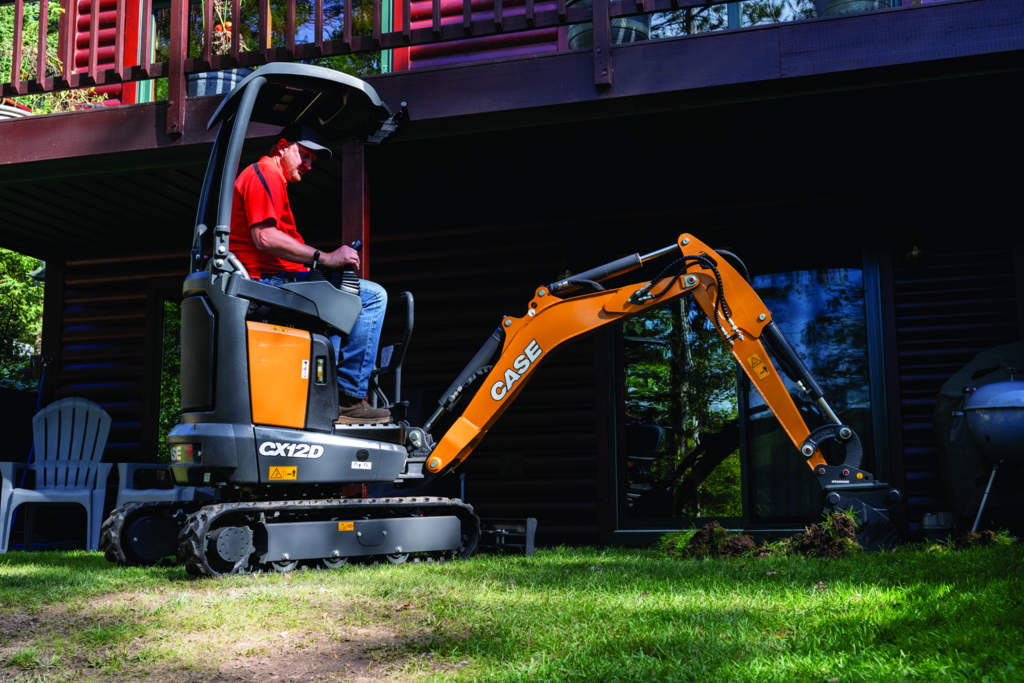Tread Wisely: A Guide to Mini Excavator Tracks
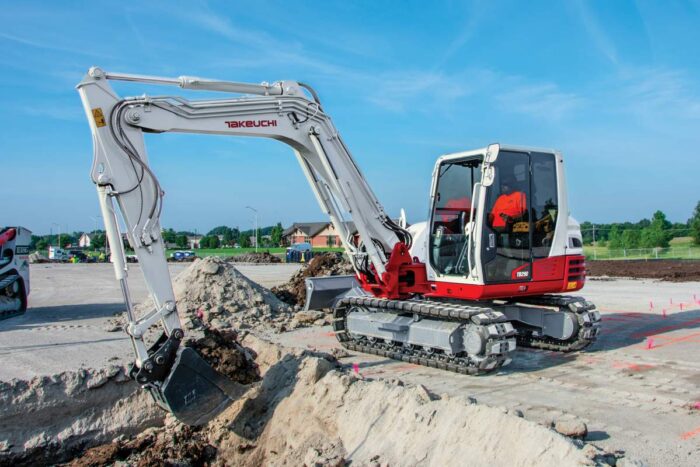
It’s hard to drive past a construction, demolition, landscaping or utility jobsite these days without spotting a mini excavator at work. And there are plenty of good reasons for that.
“Their small size makes them perfect for tight urban spaces, and they’re versatile enough to tackle an ever-widening range of tasks,” says Tim Cicora, product manager for Takeuchi-US. “And, with labor shortages still a challenge, a mini excavator’s ease of use and versatility help contractors get more done with fewer operators.”
Mini excavators are also fuel efficient, cost effective and easy to transport, which makes them a favorite for rental fleets. As urban development ramps up, so does mini excavator demand, especially with improved hydraulics, telematics and overall performance. However, choosing the wrong type of tracks for your excavator can quickly detract from those benefits.
“Using the wrong tracks can lead to increased wear and tear on both the tracks and the excavator’s undercarriage, as well as reduced traction and stability,” says Cicora. “It can also result in higher fuel consumption and damage to sensitive surfaces, like pavement or landscaping. You can even experience unprofitable downtime as the tracks require more frequent repairs or replacements since they’re simply not right for the job.”
Getting on the Right Track
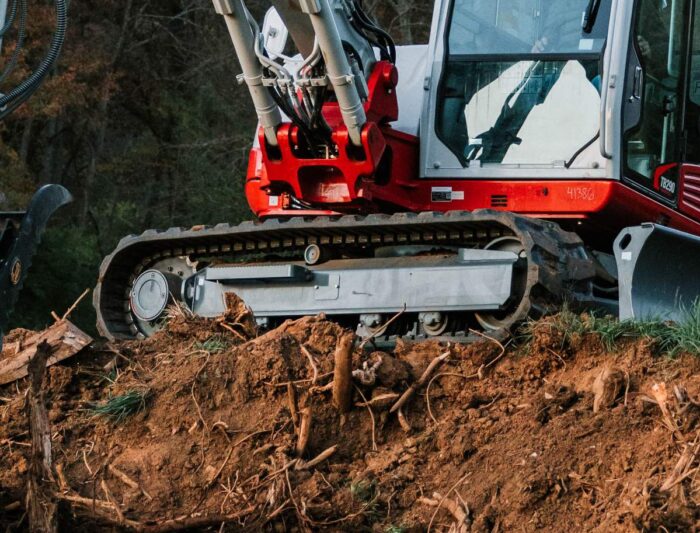
So, what are your choices when it comes to mini excavator tracks, and how do you know which tracks are right for you? First, let’s explore what’s available. There are three primary types of tracks — rubber, steel and hybrid.
Rubber tracks are very versatile, made from reinforced rubber with embedded steel cords. They offer low ground disturbance, a smooth ride and quieter operation, making them ideal for urban and landscaping projects. However, they’re less resilient on sharp or rocky terrain, and they wear out faster in extreme conditions.
Steel tracks, constructed from metal links, are highly durable and suitable for rocky or muddy conditions. They also offer more traction in these challenging environments. That said, they tend to be more costly to replace, and they’re heavy, which can cause more damage to jobsite surfaces.
Hybrid tracks, also known as “roadliner” tracks, are a combination of rubber and steel, offering some benefits of each. They’re tougher than rubber tracks but less likely to damage surfaces than steel tracks. Their rubber pads can be replaced without having to also replace the chains. Hybrid tracks do come at a higher price point than rubber tracks, but they aren’t as expensive as those made completely of steel.
Mini Excavator Track Tread Patters

Tracks also come with different tread patterns that can enhance performance on various terrains. The “straight bar” tread pattern is ideal for muddy conditions, as it provides maximum traction. “C-pattern” tread is balanced for general use, offering good traction with less vibration. The “multi-bar” tread pattern is best for paved surfaces as it minimizes ground damage and vibration. And finally, “block tread” is designed for greater stability on loose gravel and hard-packed soil.
“You can also choose to have ‘grouser bars’ on steel tracks to improve their grip,” adds Cicora. “Track width also affects performance. Narrower tracks are better for tight spaces and hard surfaces, and wider tracks improve stability and flotation on soft ground — but are less maneuverable.”
Decision Factors
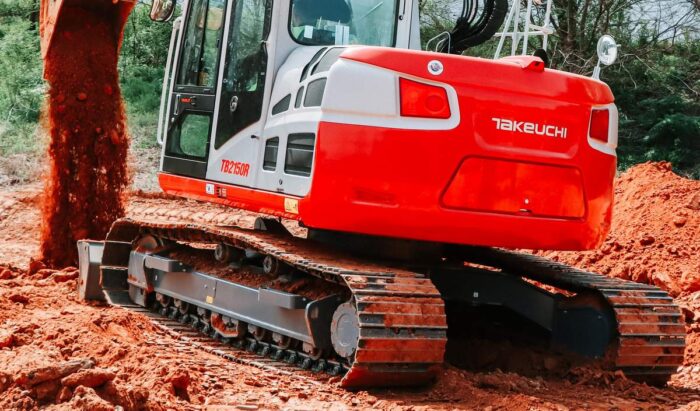
After looking at all the possible track types available for your mini excavator, it’s clear to see that your most common applications and jobsite conditions will likely dictate your track choice. Here’s a quick list of decision factors that can also help:
Terrain Type
Contractors should choose the track type that best matches the terrain they’ll find themselves working on most of the time — mud, pavement, uneven, rocky, hilly, loose soil and so on.
Hybrid tracks can be a good compromise if conditions will vary greatly from project to project.
Machine weight and application. Different tracks provide varying levels of support, traction and ground protection based on the machine’s size and operating conditions. Smaller mini excavators (under 10,000 lbs) typically use rubber tracks because they offer a smoother ride, reduce ground disturbance and are well suited for urban environments, landscaping and light construction work. Larger mini excavators (over 10,000 lbs) are often used in harsher conditions, making steel tracks a better option, especially on jobsites with rocky, uneven or abrasive terrain.
Let’s take a look at the smallest mini excavators on the market.
Cost vs. Performance
Rubber tracks are generally more affordable upfront and are a good choice for light-duty applications where surface protection matters. However, they may need to be replaced more often if used on rough terrain. Steel tracks have a higher initial cost but last longer and perform better on rugged jobsites, making them a cost-effective investment for demanding conditions. Balancing the budget with expected workload ensures the best return on investment.
Need for Fuel Efficiency
Track weight and rolling resistance directly affect fuel consumption. Rubber tracks are lighter and provide less resistance, leading to better fuel efficiency, especially on smooth or compacted surfaces. Steel tracks, while more durable, add weight and require more power to move, increasing fuel consumption. Additionally, worn out or improperly tensioned tracks can create more drag, further reducing efficiency. Understanding whether durability and terrain type outweigh the benefits of fuel efficiency will help you decide what kind of tracks make the most sense for you.
Priorities Matter
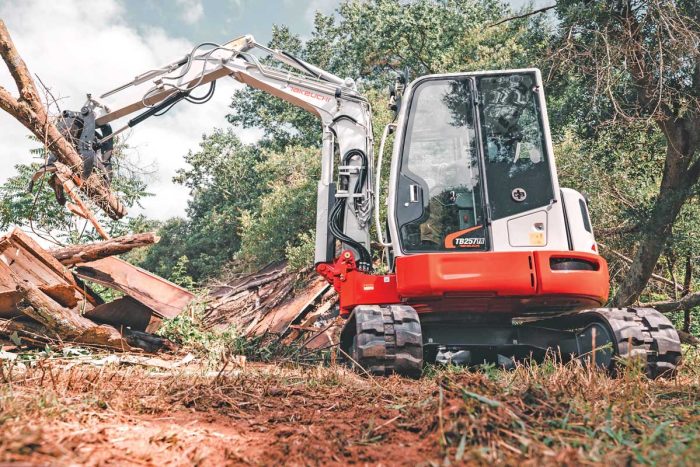
Choosing the right tracks for your mini excavator comes down to multiple factors — it’s about maximizing efficiency, reducing costs and keeping your machine working at its best.
“Whether you prioritize surface protection, traction, fuel savings or longevity, selecting the right tracks for your specific applications can make a noticeable difference in your bottom line,” says Cicora. “By understanding the pros and cons of rubber, steel and hybrid tracks, along with tread patterns and track width, you can make an informed decision that keeps your excavator productive and your projects running smoothly.”
Lynette Von Minden is vice president and director of public relations at Swanson Russell.



